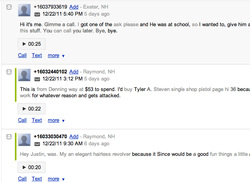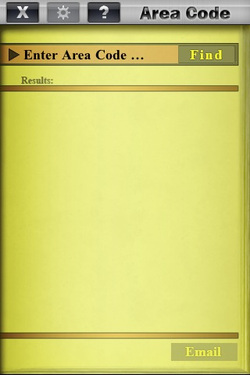
Here is what I learned in the process:

Solution - I shared the recordings I received with the rest of the class and had them try to figure out who each message was from the weird, extremely faulty transcriptions of each message. Surprisingly, this made calling in seem fun enough to get most of my guys involved the next time around.
Also, I started a new policy of making up work. Since it was pointless to have students call in after I'd already made a movie using voicemail messages, in order to make up the missing work, they had to complete a textbook assignment for me that was WAY more work than making a fifteen-second phone call.

Solution - It turns out that several of the students who I was ABSOLUTELY CERTAIN were jerking me around actually did try to call and leave a message. The problem was one of inter-generational communication.
As it turns out, many of my 8th graders have never had to make a long-distance phone call. They don't generally talk to or text anyone outside of our state. If they do, it's generally a grandparent, in which case, they just hit "reply" on their cellphone history. Several of my guys had no idea what an area code is. They have always assumed that the digits in parentheses in a phone number were like the "http://" in a web address - discretionary stuff that only adults care about. A good number of my students did call my number, but not in the right area code.
(When I signed up for a GoogleVoice account, there weren't any New Hampshire telephone numbers available, so I took one in the Detroit area. Somewhere in New Hampshire, there is a confused - and increasingly irritated - customer who is getting a lot of nonsensical calls from 13 year-olds.)
Explaining this and demonstrating it with a borrowed cellphone cleared it up.
Mostly.

Solution - Cellphone calling plans work on the concept of minutes, rather than distance and land-lines are generally the way old people like parents communicate, so some of my students didn't know that you have to dial "1" before the actual phone number, on your home phone, if it is out-of-state. Also, a couple of students had tried calling from the telephones in school classrooms, which won't allow long-distance calls.
I addressed this by explaining the problem, then having all my students add a "1" in front of the telephone number they had written down in their notes and planners.
They all felt that the concept of long-distance was pretty stupid, and I find that I don't particularly disagree with them.
 RSS Feed
RSS Feed